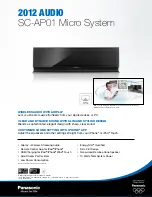
C O N T R O L S A N D C O N N E C T I O N S
8
2. STEREO INPUT SECTION
(12A) L (MONO) LINE
INPUT
On stereo input channels
5-12, the 1/4” line inputs
are designed for stereo
or mono line-level signals
such as those from key-
boards, drum machines,
CD players, tape decks,
or samplers. However,
these inputs can also be
used as standard mono
line inputs by connecting
the signal to the L
(MONO) line in. This sig-
nal will be routed equally
to the BAL control and
the left and right outputs
in the same way as the
standard line input chan-
nels. For the stereo line
inputs the mono channel
PAN (9) control is
replaced by the BAL
(Balance) control. See
also BAL CONTROL
(13) below.
(12B) R LINE INPUT
When using channels 5-
6, 7-8, 9-10,11-12 as
stereo input channels,
the left signal should be
connected to the L input
and the right signal to the
R input. These signals
will be routed to the
TRIM (4), PAD (5), EQ
(6), AUX (7), EFF (8) and
Channel fader (11) con-
trols equally and will
retain their stereo sepa-
ration. The AUX, EQ,
EFF, BAL, and Channel
fader controls all function
the same as those on the
mono input channels.
When a stereo signal is input to a stereo input channel, these
controls will affect the left and right signals equally.
The Stereo Line Inputs jacks are 1/4” TRS unbalanced phone
jacks, Tip = hot, Ring open, Sleeve = ground. The input sig-
nals to these jacks, however, can be either balanced or
unbalanced.
(6) EQUALIZERS
The stereo channel EQ’s operate in the same manner as
those in the mono channels. The left and right signals will be
affected equally. A stereo equalizer is generally preferable
anyhow to using two mono equalizers when equalizing a
stereo signal as it avoids possible discrepancies between the
left and right settings.
(7) AUX SENDS
These are the same as
for the mono channels.
Note that a mono sum is
taken from the stereo
input.
(13) BAL CONTROL
For a mono input to the L
(MONO) input the func-
tion of the control is the
same as the PAN con-
trols (9) of the mono
channels. However, when
a channel is run in stereo,
this control functions as a
balance control, determin-
ing the relative balance of
the left and right channel
signals being sent to the
left and right Master Mix
buses. For example, with
the balance control
turned fully clockwise,
only the right portion of
the channel’s stereo sig-
nal will be routed to the
Master Mix.
(4A) PEAK LED INDI-
CATOR
(10) PFL SELECT
SWITCH
(11) CHANNEL FADER
All these have the same
function as for the mono
channels. See MONO
INPUT SECTION.
(12A)
(12B)
(4)
(5)
(4A)
(6)
(7)
(8)
(13)
(10)
(11)

































